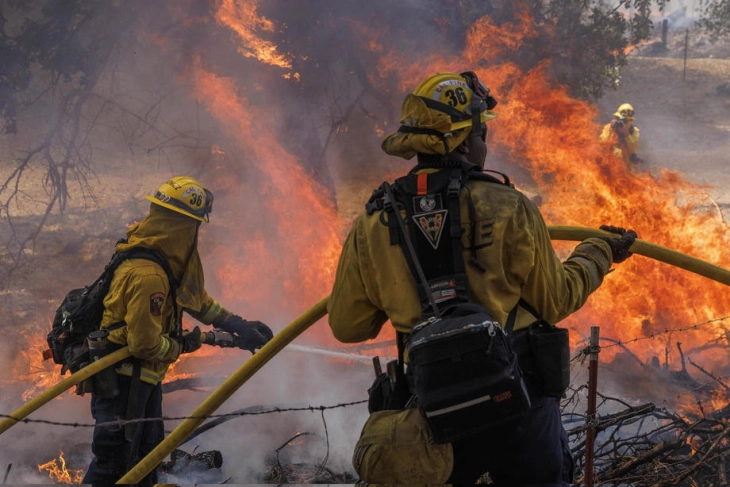Oak fire near Yosemite expands, thousands threatened
- Post By Magdalena Reed
- 09:54, 24 July, 2022

Los Angeles, 24 July 2022 (tca/dpa) — A brush fire in Mariposa County showed extreme behavior as it exploded in size to 6,555 acres [2650 hectares] overnight, threatening thousands of homes and quickly becoming one of California's largest wildfires of the year.
The Oak fire, which started around 2 pm Friday, was 0% contained as of noon Saturday, according to the California Department of Forestry and Fire Protection. The fire has destroyed 10 structures and is threatening 2,000 more.
Areas under mandatory evacuation orders Friday night stretched for several miles, from the unincorporated community of Jerseydale south to Bootjack and other areas along Highway 49.
"Fire activity is extreme with frequent runs and group torching," according to Cal Fire. "Vegetation is very receptive to new spot fires due to the hot, dry weather and drought. Heavy fuels, strong winds and low humidity are also influencing fire behavior."
Assisted by several water-dropping helicopters, nearly 400 firefighters are battling the blaze.
Fire officials said it could be a week before the fire is fully contained. Authorities are investigating what caused the blaze, which began in the area of Highway 140 and Carstens Road near Midpines.
Some residents evacuating the Oak fire posted photos to Twitter of a pyrocumulus cloud ballooning into the atmosphere. The cloud top reached altitudes of 25,000 to 30,000 feet [7,620-9,150 meters] early Friday night, according to Andy Bollenbacher, a meteorologist with the National Weather Service in Hanford.
Pyrocumulus clouds are formed by plumes of smoke rising vertically over wind-driven fires. Heated air from the fire rises rapidly, creating even gustier conditions and making suppression more difficult. Under certain conditions, that fast-rising air can create a fire tornado. The black pyrocumulus clouds carry soot, ash and other pollutants as high as 10 miles [16 kilometers] into the atmosphere.
In the most extreme cases, a wildfire can create its own weather when smoke forms what is known as a pyrocumulonimbus cloud. Like a thunderstorm, such clouds produce lightning and potentially stronger winds, which can start and spread more fires in a chain reaction.
Though conditions in the Oak fire area were not yet that severe, they helped drive the fire's rapid growth, Bollenbacher said. Relative humidity was very low — about 7% to 8% — and temperatures hovered around 95 degrees. Winds came out of the northwest at 5 to 10 mph and gusted to about 20 mph, he said.
Lighter winds Saturday could bring limited relief and tamp down the extreme spotting behavior observed Friday, but temperatures and humidity will stay about the same, Bollenbacher said.
The fire tore through an area with extremely dry fuels near "subdivisions nestled in the foothills amid dense vegetation," Daniel Swain, a climate scientist at UCLA and a California climate fellow at the Nature Conservancy, said on Twitter.
"With #OakFire, streak of relatively modest and non-destructive wildfires in CA so far this season appears to be over," Swain said in a later tweet. "This continues to be an intense & fast-moving fire, and is now burning into the wildland-urban interface, with some level of structure loss already."
There were other social media reports of structure loss, but officials with Cal Fire were not able to confirm whether any structures were damaged or destroyed Friday night.
Less than 10 miles east of the blaze, the Washburn fire was still burning in Yosemite National Park. That fire has scorched nearly 5,000 acres since igniting July 7 and was 79% contained as of Friday.
Deputies received reports of people trapped in the evacuation zone either without vehicles or otherwise not able to leave, said Kristie Mitchell, spokesperson for the sheriff's office. Units were helping them evacuate, but it was not clear how many people in the path of the fire needed assistance.







